Overview:
The article outlines the steps to effectively use 3D renderings to bring concepts to life, emphasizing the importance of this technology in enhancing visualization and communication across various industries, particularly architecture. It provides a detailed guide on the rendering process, including conceptualization, modeling, texturing, lighting, and post-processing, while highlighting the benefits of improved decision-making and client engagement that result from these visual representations.
Introduction
In the realm of architecture, the evolution of 3D rendering has transformed the way designs are conceived, visualized, and communicated. As a sophisticated process that generates lifelike images from digital models, 3D rendering is not merely a tool for aesthetic enhancement; it serves as a pivotal mechanism for bridging the gap between abstract ideas and tangible realities.
With advancements in technology, architects can now harness the power of artificial intelligence and immersive visualization techniques to create compelling representations that foster client understanding and drive informed decision-making.
This article delves into the intricacies of 3D rendering, exploring its significance across various sectors, the methodologies involved in producing high-quality visuals, and the challenges that professionals must navigate to optimize their rendering practices.
By understanding these elements, architects can effectively leverage 3D rendering as an indispensable asset in their design workflows, ultimately enhancing project outcomes and client satisfaction.
Understanding 3D Rendering: Definition and Importance
3D visualization refers to the sophisticated process of generating three-dimensional images from digital models through advanced computer software. This technique is crucial in building visualization, enabling architects to showcase their creations with remarkable realism and visual clarity, particularly through the use of AI in creating lifelike CG humans that bridge the uncanny valley. The importance of 3D visualization goes beyond simple aesthetics; it fundamentally improves the expression of intent, thereby promoting client comprehension and enabling informed decision-making.
As an essential mediator between abstract ideas and tangible realities, the steps to how 3D renderings bring concepts to life serve as a crucial resource within the field of architecture. Recent advancements in visualization technology have enabled the design of comprehensive urban landscapes and detailed interior environments, which play a crucial role in preserving architectural legacy and celebrating creativity. Initiatives like the World Trade Show in Shanghai illustrate how these visual representations enhance confidence in ventures and generate investment through compelling pre-sales visualization, which can significantly boost revenue for construction endeavors.
Furthermore, firms that have integrated Building Information Modeling (BIM) into their workflows, which inherently includes 3D visualization, report an average time saving of 20% on their projects and can reduce facility operation costs by up to 30% over the life of a building. This demonstrates the transformative influence of these tools on architectural practice, highlighting the steps to how 3D renderings bring concepts to life as an essential element of contemporary creation. Furthermore, the 3D visualization market offers possibilities for producing visual representations in diverse sectors, such as:
- Medical imaging
- Training simulations
- Product prototyping
- Graphic art
This emphasizes the adaptability and considerable influence of this technology on numerous domains.
Step-by-Step Guide to Creating 3D Renderings
- Conceptualization: Start your illustration process by meticulously collecting all pertinent project documents, sketches, and specifications. This foundational step is essential in the steps to how 3D renderings bring concepts to life, ensuring that your rendering aligns with the intended vision and technical requirements. Moreover, incorporating environmental education principles is vital for adapting your creations to climate change, thereby promoting sustainability in your architectural projects through the steps to how 3D renderings bring concepts to life. Participating in client collaboration during this phase is essential, as it aids in clarifying preferences and expectations, ensuring that the outcome reflects the client’s vision.
Modeling: Leverage advanced software such as SketchUp, Revit, or 3ds Max to construct a detailed 3D representation of your concept. Precision in dimensions and a keen focus on intricate details are essential steps to how 3D renderings bring concepts to life, as they form the backbone of your architectural representation. Additionally, be prepared to manage unexpected data schema changes by implementing version control, thorough testing, and real-time monitoring to maintain operational integrity.
Texturing: Apply a diverse range of materials and textures to your model, selecting finishes that realistically mimic their real-world counterparts. This step greatly enhances visual fidelity and contributes to the overall authenticity of the render, which are essential steps to how 3D renderings bring concepts to life, ensuring that your design captures its essence effectively.
Lighting: Establish a comprehensive lighting setup that simulates both natural and artificial light sources. The quality and positioning of your lighting are pivotal in achieving a lifelike appearance, which are essential steps to how 3D renderings bring concepts to life by significantly influencing the perception of textures and materials in the final output. Select a suitable visualization engine, such as V-Ray or Corona, and meticulously adjust settings related to resolution and quality. Initiate the processing procedure, keeping in mind that the parameters selected will greatly impact the final image. Recent technological advancements, such as Luminar’s acquisition of Civil Maps, may also improve visualization practices and capabilities in your projects.
Post-Processing: After creating, refine your image using software like Adobe Photoshop. This phase allows you to fine-tune colors, contrast, and apply effects, ultimately achieving the desired aesthetic that meets professional standards and enhances client understanding. By ensuring that all essential information, including design concepts, sketches, CAD files, and specific preferences, is integrated into the steps to how 3D renderings bring concepts to life, you can significantly improve stakeholder communication and enhance the overall effectiveness of your visualizations.
Exploring Techniques: Types of 3D Rendering
The design visualization field encompasses various steps to how 3D renderings bring concepts to life, with each imaging method offering unique benefits based on project needs and outsourcing factors. Comprehending the reasons for outsourcing 3D design rendering is vital, as it can result in enhanced efficiency, access to specialized expertise, and cost savings.
Real-Time Rendering: Predominantly utilized in interactive applications and video games, this technique provides immediate feedback and allows for real-time adjustments, making it invaluable for dynamic architectural presentations and client interactions.
Its adoption is rising, fueled by the increasing need for immersive experiences that improve buyer engagement and confidence.Ray Tracing: Famous for its capacity to replicate realistic light interactions, ray tracing generates images of outstanding quality and detail, essential for generating enthusiasm about an initiative. However, it often necessitates significant processing power. As noted by industry expert Lionel Sujay Vailshery, staying abreast of emerging technologies in this area is essential to maintain a competitive edge. In comparison to rasterization, ray tracing excels in producing photorealistic images but at the cost of longer processing times, making it less suitable for scenarios requiring rapid output.
Rasterization: While rasterization remains a staple in game development due to its speed, it often sacrifices detail for performance. This technique is effective for situations where quick output is prioritized over photographic realism, making it a practical option for tasks with tight timelines.
Photorealistic Visualization: This method aims to create images that are indistinguishable from actual photographs, illustrating the steps to how 3D renderings bring concepts to life, making it highly suitable for architectural presentations. Its attention to detail not only enhances client confidence but also aids in approvals, ultimately impacting property value through increased visual appeal and market differentiation, which are crucial steps to how 3D renderings bring concepts to life.
Non-Photorealistic Rendering (NPR): By emphasizing artistic expression rather than strict realism, NPR is ideal for conceptual designs. This technique enables architects to express concepts and feelings, promoting a deeper comprehension of the vision through immersive exploration and customization options.
A notable case study emphasizes the practical advantages of 3D visualization techniques: the introduction of 360-degree 3D images has led to a 35% decrease in sales returns, allowing customers to make more informed purchasing choices without raising expenses or changing return policies. This highlights the effectiveness of visualization techniques in enhancing user experience and decision-making, illustrating the steps to how 3D renderings bring concepts to life. Furthermore, task complexity and scale play an important role in deciding the suitable technique and the resources needed.
The more intricate your project, the more time and resources it requires to bring it to fruition. Formal methods can also be utilized to model design systems and derive decision support information, further demonstrating how these visualization techniques can inform design choices. The architectural visualization software market is anticipated to expand at a compound annual growth rate (CAGR) of 17.5% from 2020 to 2030, highlighting the growing importance of these visualization techniques in enhancing business efficiency and investment in quality.
Applications of 3D Rendering in Various Industries
3D rendering serves as a critical tool across diverse industries, illustrating the steps to how 3D renderings bring concepts to life by facilitating enhanced visualization and improved communication. In architecture, the steps to how 3D renderings bring concepts to life play a pivotal role in visualizing concepts prior to construction, enabling clients and stakeholders to gain a comprehensive understanding of the undertaking. This not only helps in decision-making but also significantly lowers the risk of misunderstandings during the planning phase.
The importance of client testimonials at J. Scott Smith Visual Designs cannot be overstated; they offer insights into the trust and reliability established through successful collaborations, boosting confidence in the creative process and the results of projects. For instance, one client noted, ‘The team at J. Scott Smith Visual Designs not only delivered exceptional visuals but also understood our vision perfectly, making the entire process seamless.’
In the field of product creation, 3D visualization is essential for displaying new items and prototypes. By allowing designers to visually present their creations, it fosters marketing strategies and solicits valuable feedback before any physical production begins, thus streamlining the steps to how 3D renderings bring concepts to life.
The film and animation sector depends significantly on 3D modeling to create compelling visual effects and animated scenes. This technology enhances storytelling by illustrating the steps to how 3D renderings bring concepts to life, providing rich, detailed representations that captivate audiences. For instance, many blockbuster films employ advanced imaging techniques to achieve stunning visual fidelity.
In marketing and advertising, high-quality visuals created through 3D techniques significantly enhance promotional materials, showcasing the steps to how 3D renderings bring concepts to life, which helps brands convey their messages more effectively and engage consumers on a deeper level. The ability to present products in an appealing and realistic manner often translates into higher conversion rates and improved brand recognition.
Furthermore, the integration of 3D visualization with virtual reality technology is part of the steps to how 3D renderings bring concepts to life, offering immersive experiences that are invaluable for training, education, and entertainment. This intersection of technologies is reshaping how information is conveyed, providing users with interactive environments that enhance learning and engagement.
As the market for 3D visualization continues to expand—North America alone captured 34% of the market share in 2023—this underscores the growing significance of 3D visualization in various sectors. A notable example is the partnership between TechViz and Lenovo, which provides AR data visualization solutions from CAD files for design and engineering. This collaboration enables users to move from CAD applications to a 1:1 scale 3D representation in AR, fostering the expansion of the 3D visualization market in China.
According to research expert Lionel Sujay Vailshery, ‘Get in touch with us now,’ highlighting the urgency for industry professionals to leverage these advancements. The implications for various sectors are profound, indicating a robust trajectory for future growth and innovation. Additionally, the steps to how 3D renderings bring concepts to life through pre-sales visualization can ignite interest and investment long before construction begins, further emphasizing the strategic value of 3D imaging in the architectural domain.
For example, a recent case study demonstrated how pre-sales illustrations helped a developer secure funding by visually communicating the project’s potential to investors, showcasing the strategic advantage of effective visualization.
Challenges and Best Practices in 3D Rendering
3D visualization presents several challenges that architects must navigate to achieve optimal results. One prevalent issue is processing time, as high-quality outputs often require significant power and duration. To mitigate this, it is essential to optimize your model and display settings effectively, allowing for reduced render times without compromising visual fidelity.
Significantly, the Middle East and Africa (MEA) region is anticipated to record the fastest CAGR of 35.3% during the forecast period, highlighting the increasing significance of effective practices in the architectural field. Providing the right information early will save you time and money, as it allows for smoother project execution from the outset.
Another critical aspect is resource management. Given that the process can be exceptionally resource-intensive, utilizing a powerful workstation is paramount. Additionally, closing unnecessary applications during the processing can free up vital resources, enhancing performance and efficiency.
As highlighted by Preeti Wadhwani, ‘3D visualization is experiencing a surge due to its expanding role in product marketing,’ emphasizing the need for architects to adapt to this evolving landscape.
Achieving realism in visual representations poses its own set of challenges. A deep understanding of real-world lighting conditions and material properties is crucial. By studying these elements and applying them accurately to your models, you can significantly elevate the quality of your outputs.
Moreover, fostering client feedback and collaboration at each phase of the process is vital to align with client vision, which subsequently improves contractor communication through visual representations, avoiding design misunderstandings. This collaboration is more effective when the right information is provided early in the process.
The industry’s focus on real-time visualization and AI tools indicates a significant shift towards standardization in architectural practice, enhancing efficiency, flexibility, and innovation. In fact, 50% of respondents in a recent study anticipate more intuitive tools, while 37% plan to invest more in AI, showcasing the integration of advanced technologies in overcoming visualization challenges.
Finally, managing client expectations is essential to prevent dissatisfaction. Transparent communication about timelines and regular updates during the process can help ensure that clients stay informed and involved. Usual turnaround durations for design visualizations can differ depending on complexity, with conceptual visuals taking a few days and detailed presentations needing one to two weeks.
This proactive approach not only addresses common challenges but also enhances the overall effectiveness of architectural rendering by following the steps to how 3D renderings bring concepts to life, aligning with the industry’s growing emphasis on innovative technologies and real-time visualization, ultimately leading to cost savings in project design development through early issue resolution and client adjustments.
Conclusion
3D rendering has become an essential element in architecture, serving as a powerful tool for design communication and project execution. By transforming abstract ideas into realistic visuals, architects can effectively convey design intent, enhance client understanding, and facilitate informed decision-making.
The variety of rendering techniques, including real-time and photorealistic rendering, allows for flexibility in meeting project requirements. Its applications extend beyond architecture, impacting sectors such as product design, film, and marketing, illustrating the technology’s broad relevance. As advancements like virtual reality and artificial intelligence integrate into rendering practices, the potential for innovation and efficiency continues to grow.
However, architects must also navigate challenges such as rendering time and resource management. By implementing best practices and maintaining clear communication with clients, these challenges can be effectively managed, ensuring that projects stay on track and meet expectations.
In summary, the strategic use of 3D rendering not only enhances the quality of architectural visualizations but also builds client trust and engagement. As the industry evolves, embracing these technologies positions architects to leverage 3D rendering as an indispensable asset, ultimately leading to successful outcomes and increased client satisfaction. The future of architectural design will increasingly rely on the capabilities of advanced rendering techniques, solidifying their role in achieving excellence in the built environment.
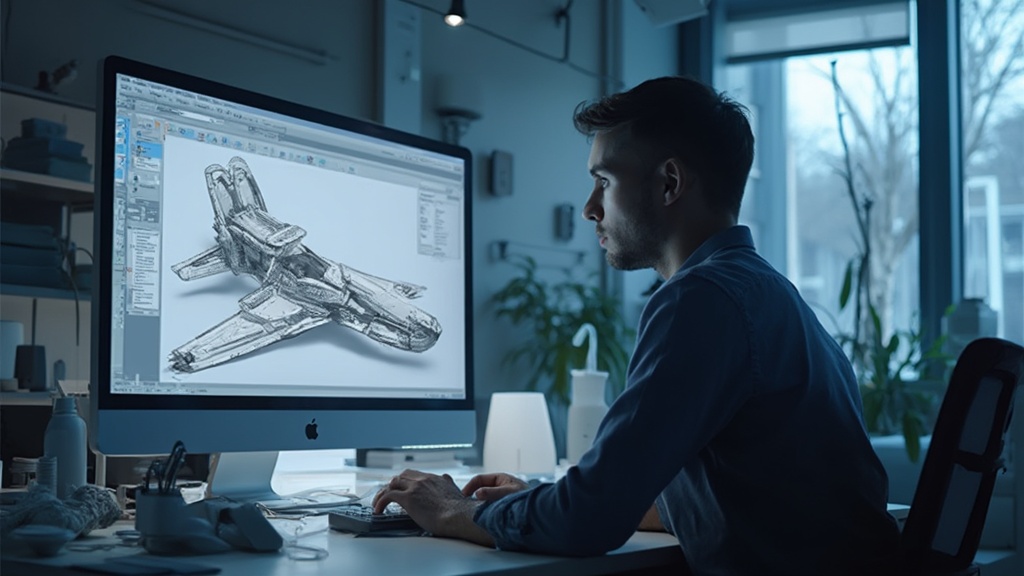
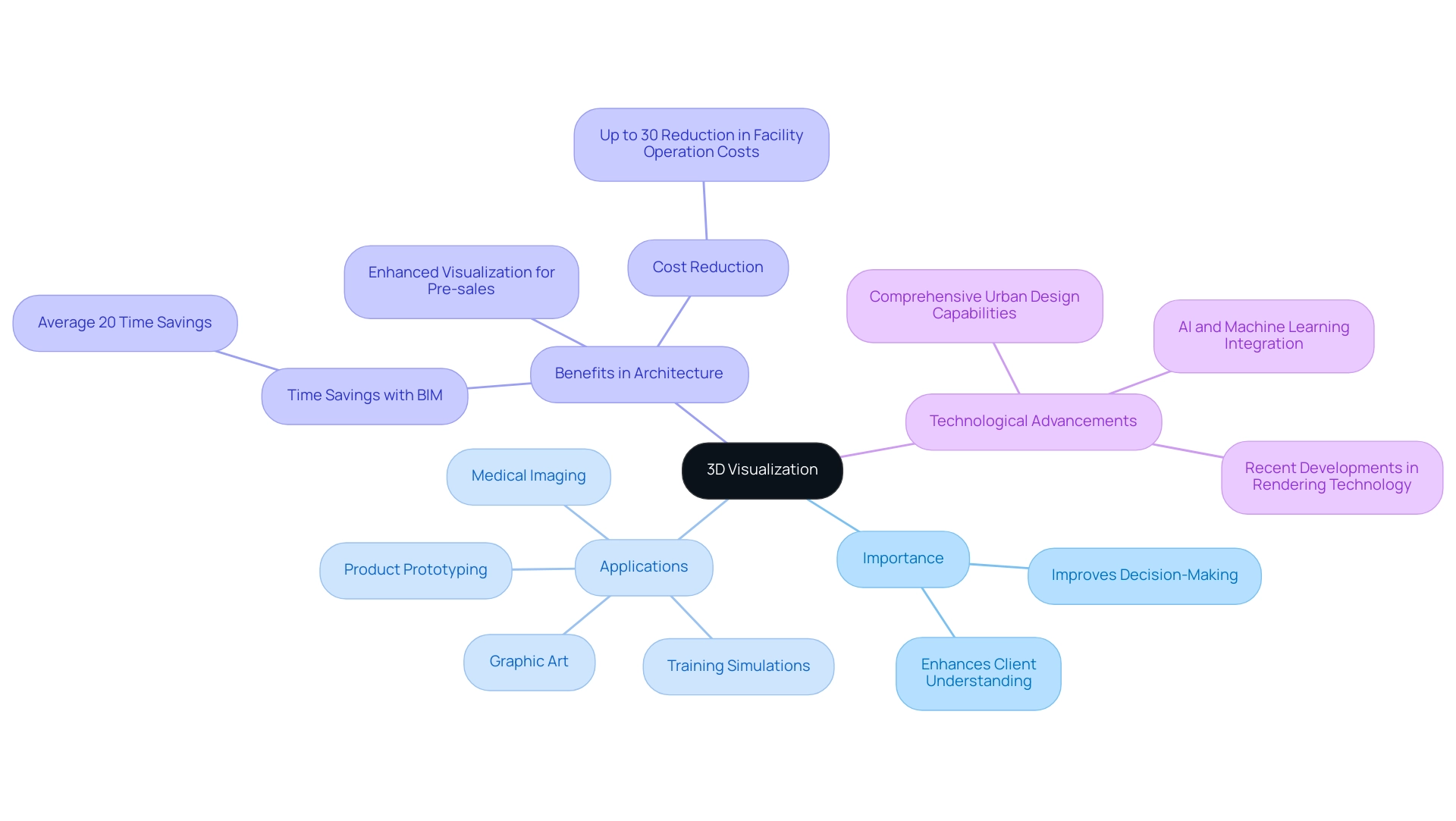
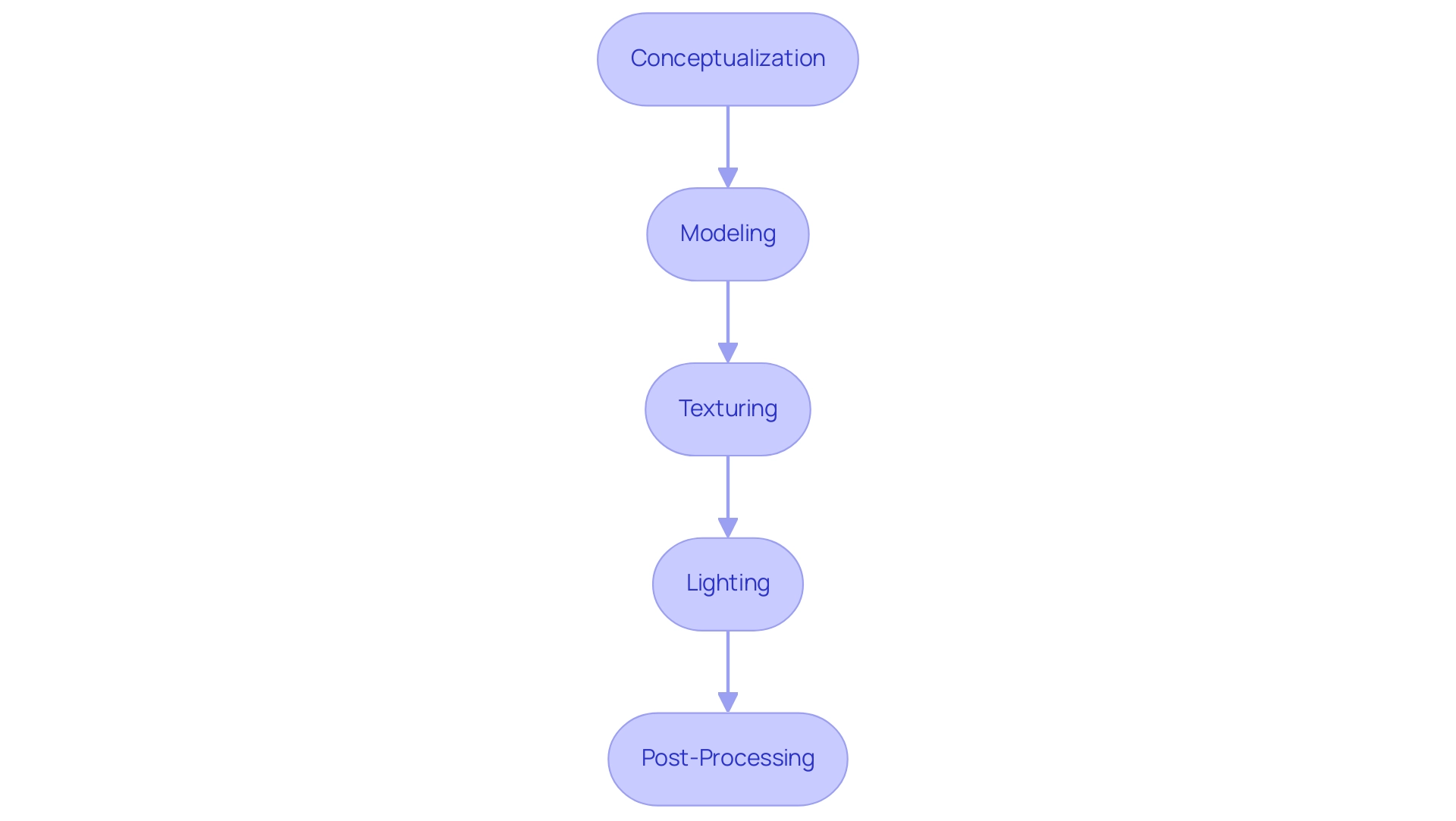
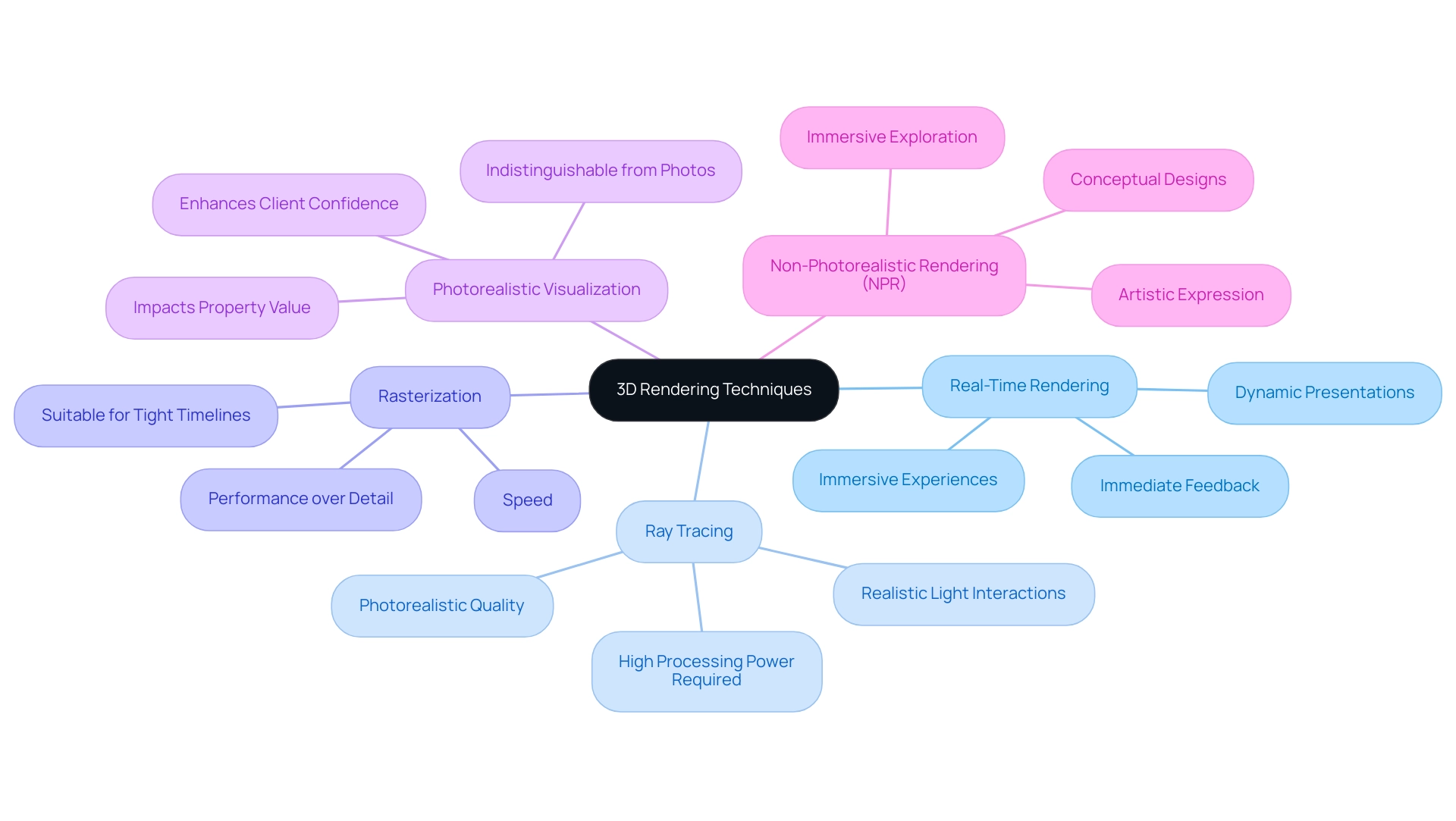
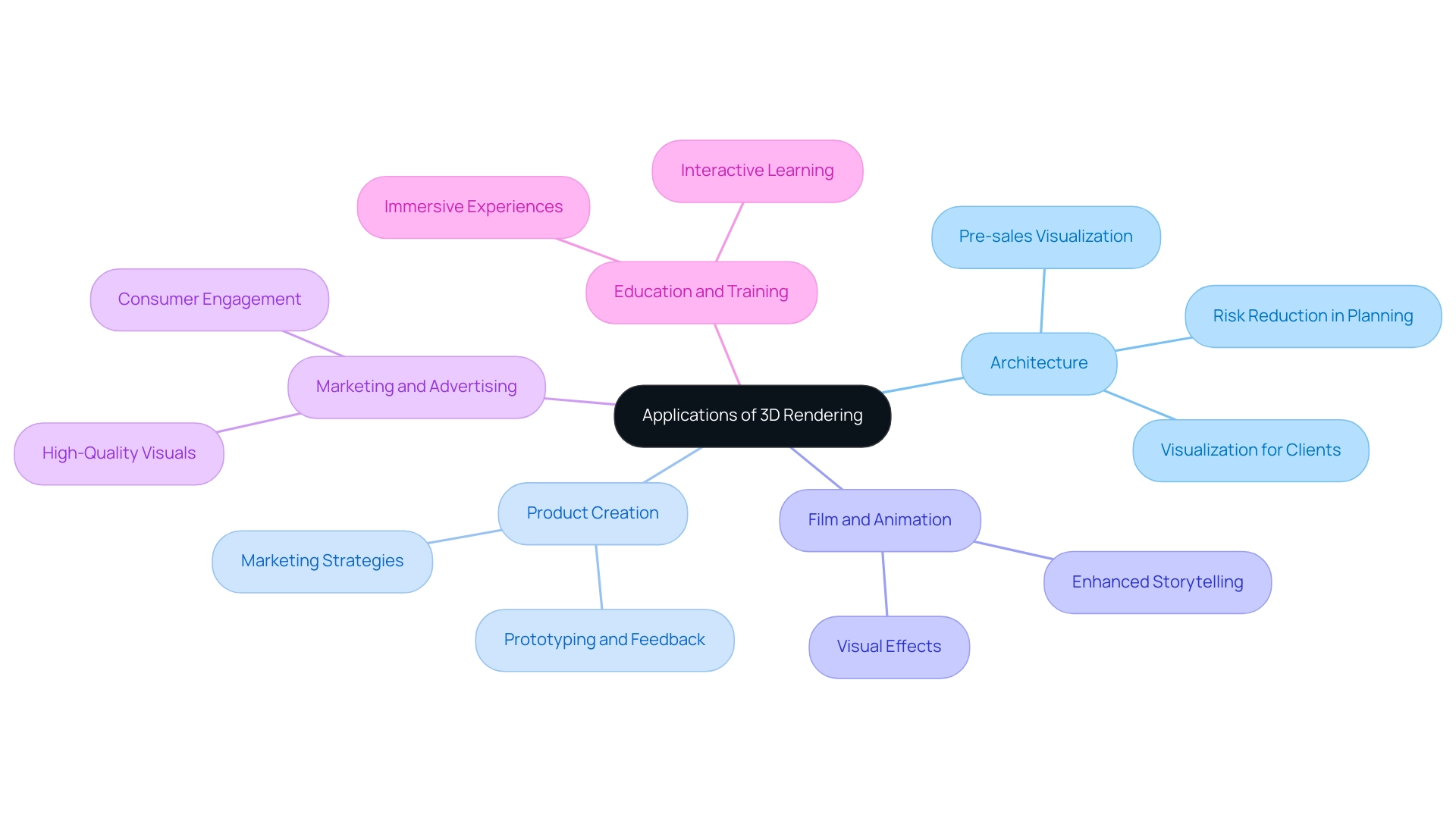
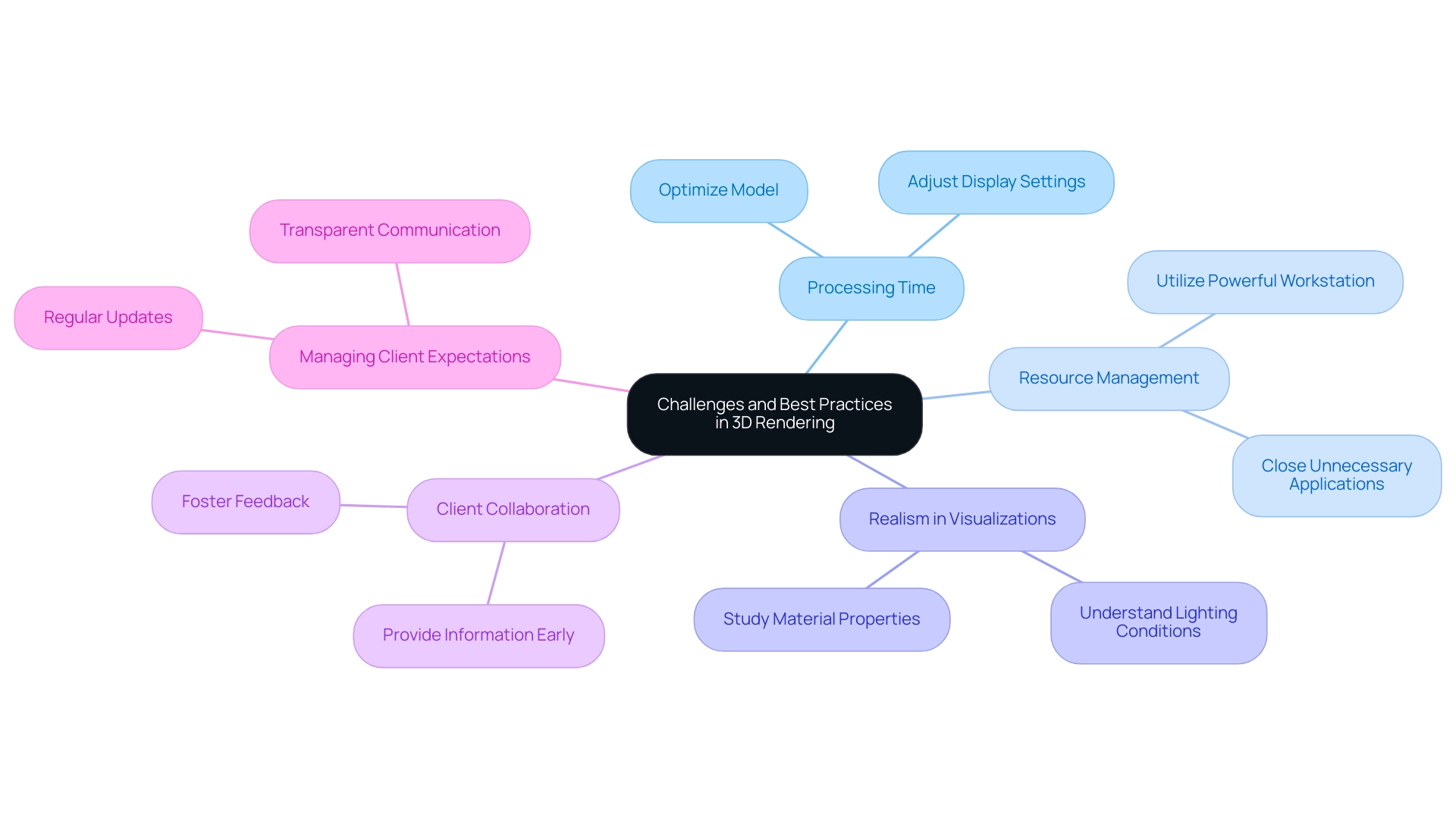
0 Comments